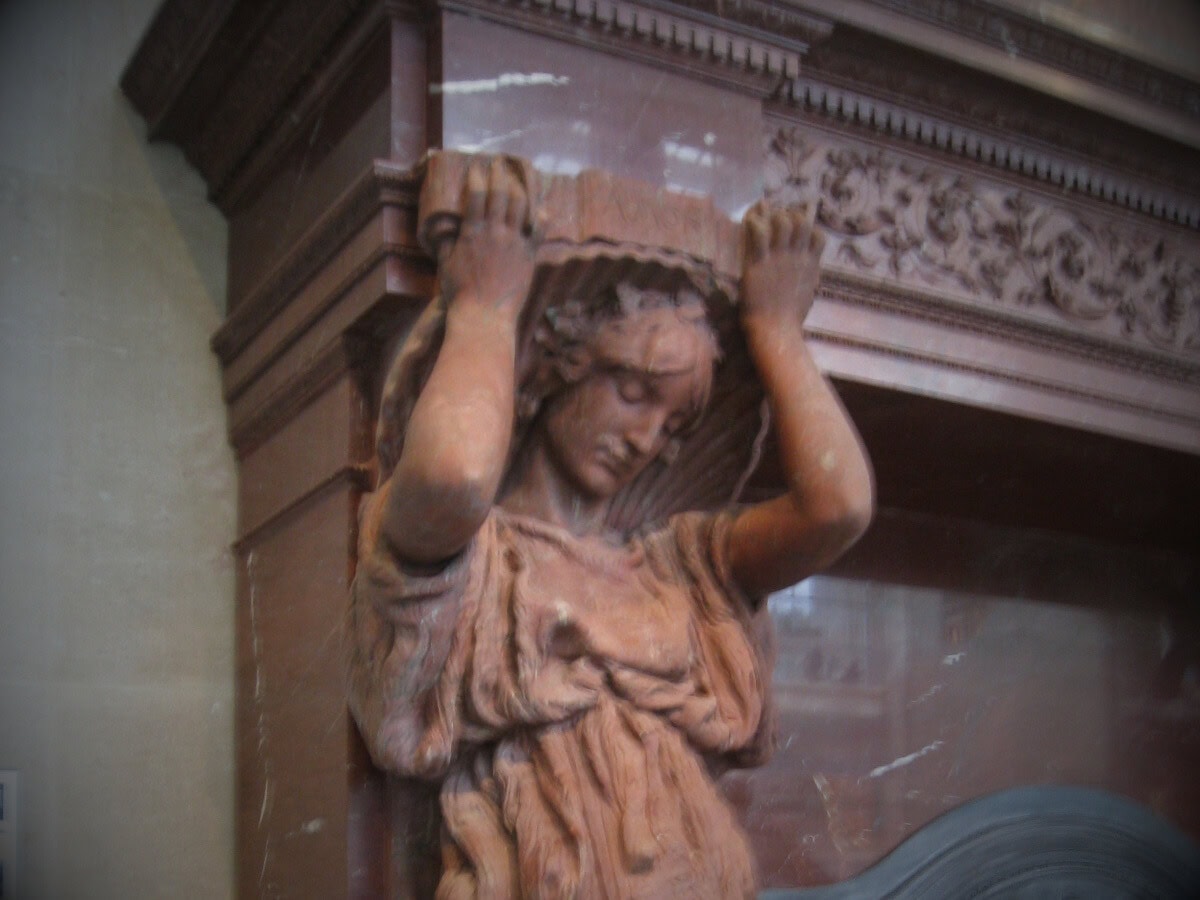Cover image: Augustus Saint-Gaudens, Vanderbilt Mantelpiece (detail), c. 1881-3. The Metropolitan Museum of Art, New York. Photo (c) A Scholarly Skater – all rights reserved.
You’ve been walking around the museum for several hours. You’re enjoying the art and generally having a great time… until suddenly you’re not. You see works by your favorite artist, but they don’t make you happy. Instead, you just want to go home and go to bed.
What’s happening?
You’re experiencing museum fatigue.
Museum fatigue (not an actual medical condition but definitely real) is the result of overwhelming yourself with more art and museum time than you can handle. Symptoms include back and neck pain, tired feet and legs, mild dizziness, fatigue, frustration and anxiety, grumpiness, forgetting great artworks you’ve just seen, not caring about art anymore, and a lot of other unpleasantness. And it can impact anyone.
When I was in college, I participated in a program where I saw contemporary art in New York City one day each week. My classmates and I were all art history or studio art majors, so we were always happy to spend time with artwork. But even such art-loving people developed chronic museum fatigue by the end of the semester. The good news is that this experience taught me to deal with this overwhelmed feeling, and I’m going to teach you.
Ways to minimize museum fatigue
My handbook, The Art Museum Adventure Guide, has an entire unit about preventing museum fatigue. Here are some highlights.
- Since museum fatigue is brought on by overloading yourself, the best way to avoid it is to pace yourself. Know the limits of your stamina, attention span, etc., and plan accordingly. Don’t try to do something crazy like see the entire Louvre in one day. (Me? Never! 😉 ) It’s better to leave yourself wanting more than to exhaust yourself and decide never to come back.
- Physical fatigue is a big part of museum fatigue, so take care of yourself to stay in the field longer. This includes getting a good night’s sleep before, eating before you arrive, and wearing comfortable shoes.
- Recognize that you can’t see everything in a large museum. Aim to have rewarding experiences with fewer artworks instead of lots of rushed experiences that barely make an impression. Plan your visit so you see whatever is most important to you first so that you aren’t too tired or rushed to enjoy it later on.
- Take a break as necessary. Most museums have couches and chairs throughout the galleries, and all have some in the lobby. Feel free to sit down every once in a while. Just a few minutes off your feet can make a world of difference. It’s also a good idea to bend over and stretch occasionally to relieve physical tightness from a lot of walking and craning your neck to see things.
- Transportation can play a big role in museum fatigue, at least for me. If you’re stressed out about catching a train or getting back across a city at rush hour, you’ll burn out sooner. When planning your itinerary, leave yourself a little extra time in the name of your sanity.
- Don’t try to keep up a busy pace for too long. Museum fatigue builds up over time. You can get away with a day or two of a breakneck pace, but it will catch up to you if you sustain it for days on end. This is often a problem if you’re on vacation and plan to do a lot of sightseeing, but there’s little point in cramming in lots of experiences you won’t look back on fondly.
Expert guidance for your next art museum adventure

The advice in this article is adapted from The Art Museum Adventure Guide, a handbook designed to help inexperienced art museum visits have more confident and enjoyable visits. If this article was helpful to you, get your copy of the handbook today.

